What is a workflow?
When a payment is created, you need to determine where to route the payment - this is where Workflows comes in. Workflows enable you to build end-to-end payment automation flows without writing any code. A workflow is necessary to dynamically process payments created via Primer. Primer gives you all the building blocks to create and manage your workflows based on your own business logic and requirements.
Workflow Example
How to create a workflow
Head to the Workflows section of the Dashboard to create your first workflow.Start from a template
When creating a new workflow, you can browse all available templates that Primer has made available for a wide array of use cases, such as Payment Orchestration and Operational Efficiency. A template, same as a workflow, consists of a Trigger and multiple blocks (Utilities, or actions with Inputs already set up). Each template covers a very specific use case but you can always tailor the workflow according to your requirements once you have added it to your account.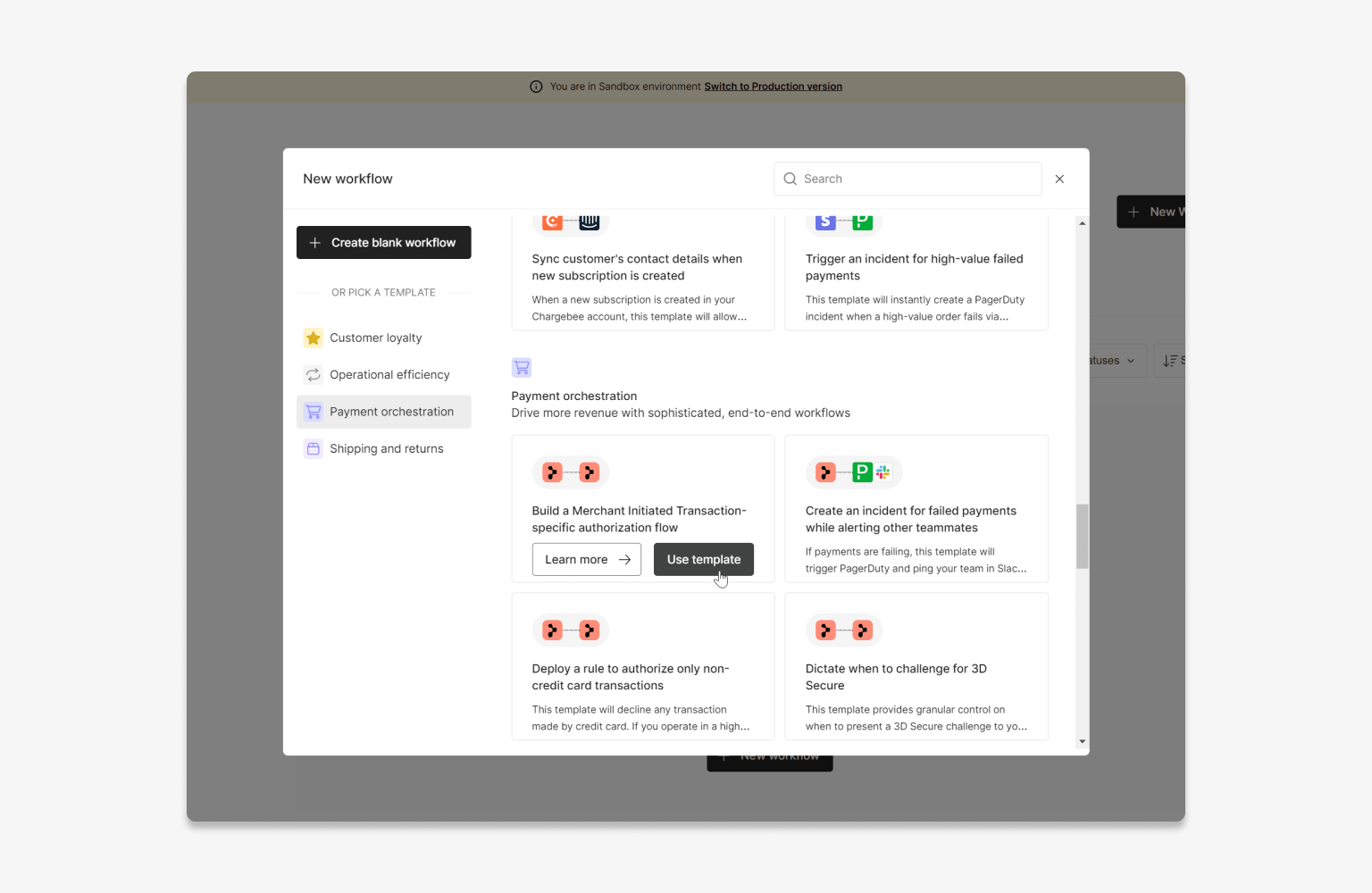
Templates List
Start with a blank workflow
If you do not want to use an existing template but start from scratch, you can also build a workflow on your own by choosing an app’s trigger.Select a Trigger
Creating a workflow from scratch always starts with the selection of an app and one of its Triggers.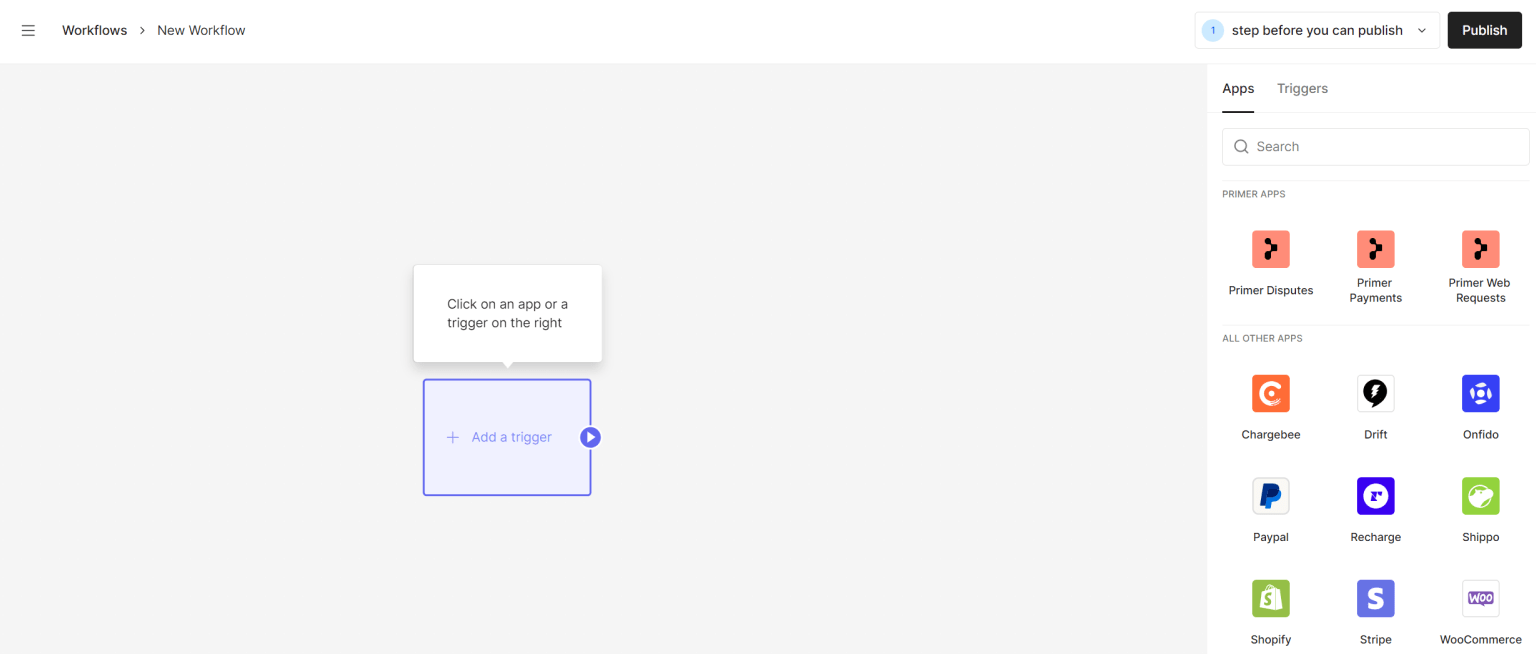
List of Apps and Triggers
- a payment is created via the Payments app
- a payment status is updated via the Payments app
- a monitor event is created via the Monitors app
- a dispute status is updated via the Disputes app
- an Onfido KYC result is received via the Onfido app
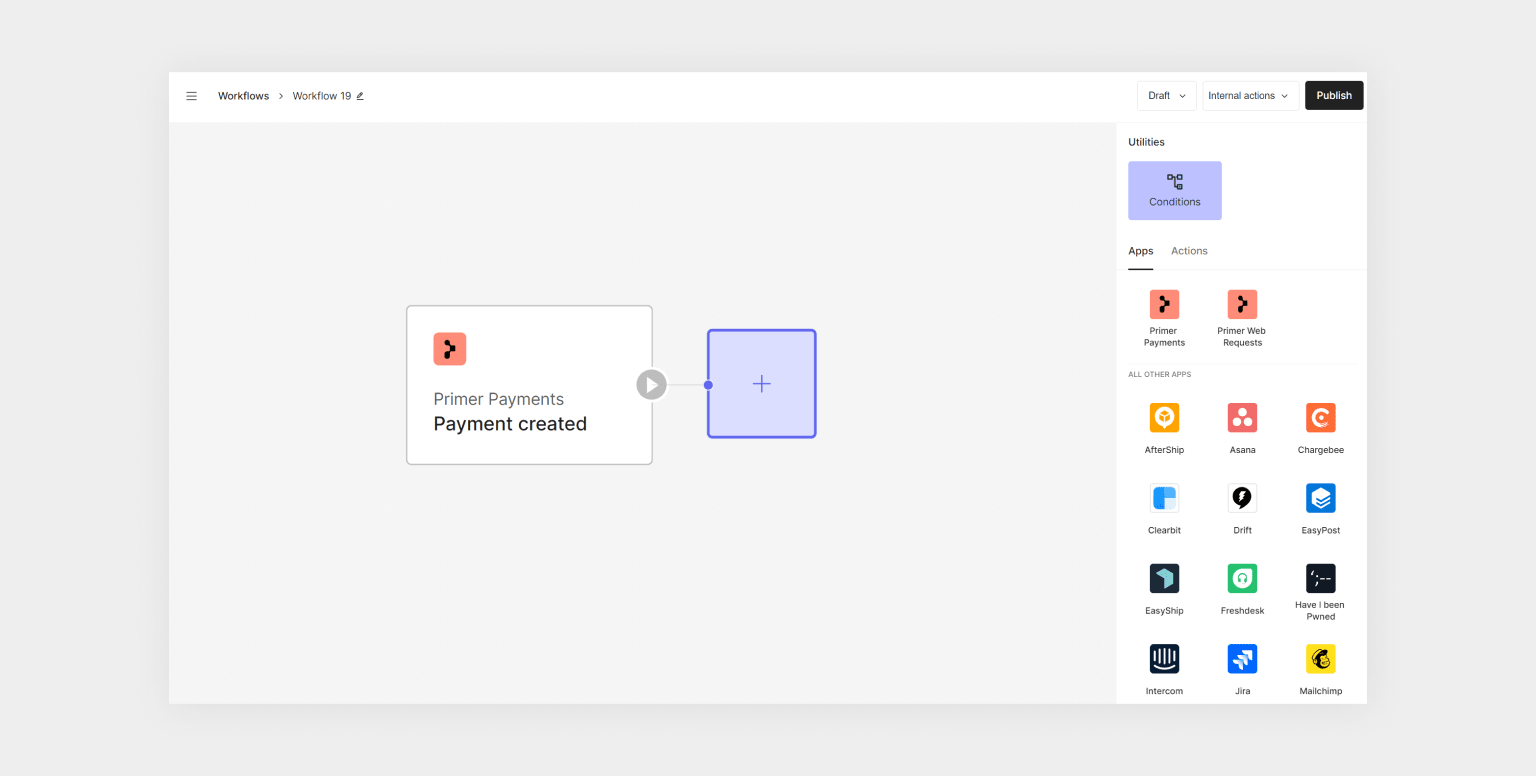
Create workflow
Add actions
Actions can be added to a workflow to perform tasks, such as:- sending a message to Slack
- creating a task on Asana
- authorizing a Payment using the Payments App with a payment processor

Drag and drop
- “Send a message to Slack“ needs to know what message to send, and to which Slack channel
- “Create a task on Asana” needs to know under which project to create the task, as well as its title and description.
- “Authorize a payment” needs to know which payment to authorize, and which processor to use
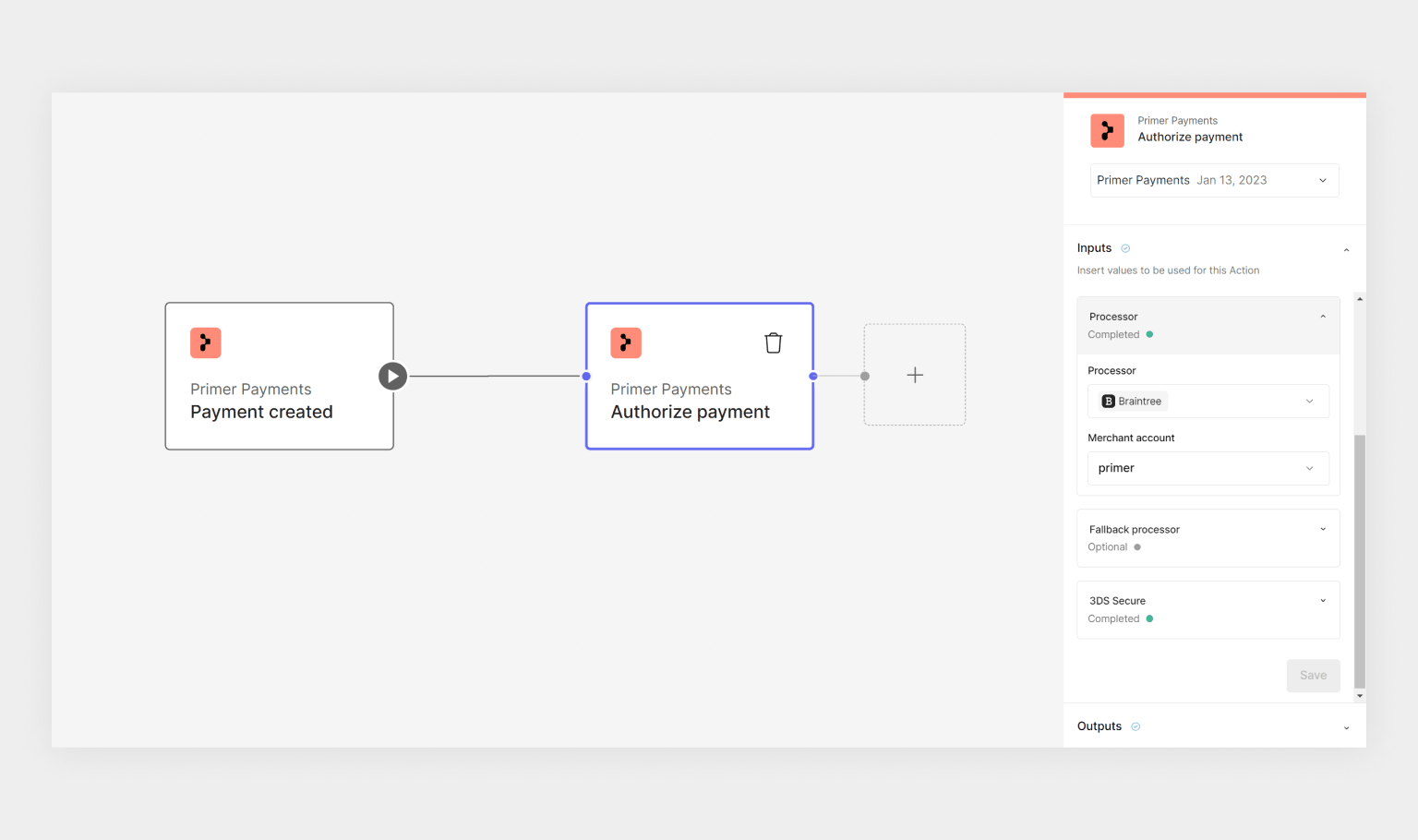
Add action
- From a Trigger: e.g. the ”Authorize payment” action can use the payment ID from the “Payment created” Trigger
- From a previous action: e.g. the ”Send a message to Slack” action can use the task URL provided by the “Create a task on Asana” task
- Set up manually: e.g. you can specify the slack channel for the ”Send a message to Slack” action
Publish your workflow
To process a payment, you will need at least one workflow that is made of the following blocks: You can also set up other payment actions in the workflow, including “Capture”, “Refund” and “Cancel”. See the Payments App section to learn more. Before you publish your workflow, we validate that all blocks are properly configured. Any incomplete blocks are highlighted so that you can apply the necessary fixes. Learn more about validation.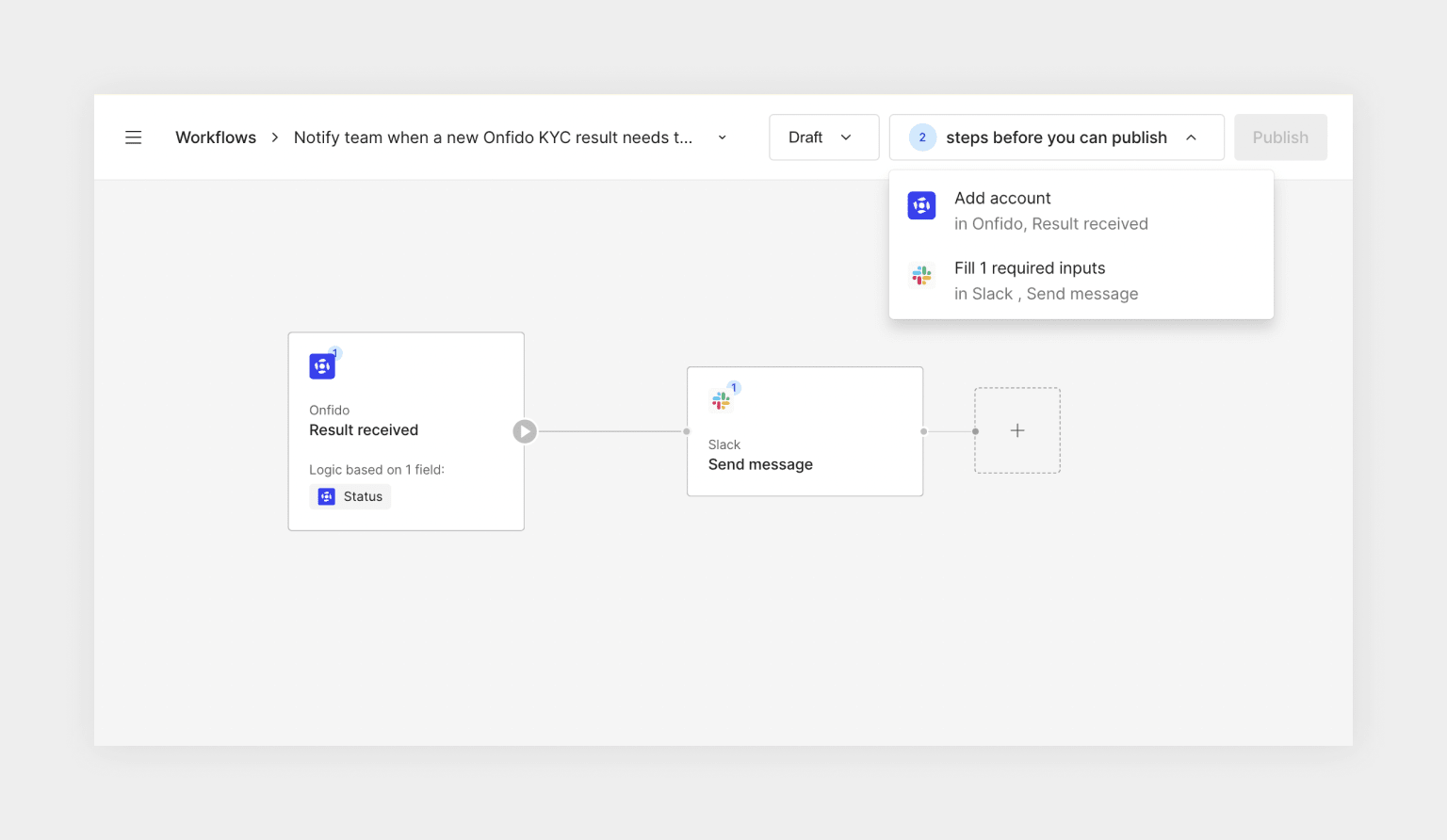
Workflow validation
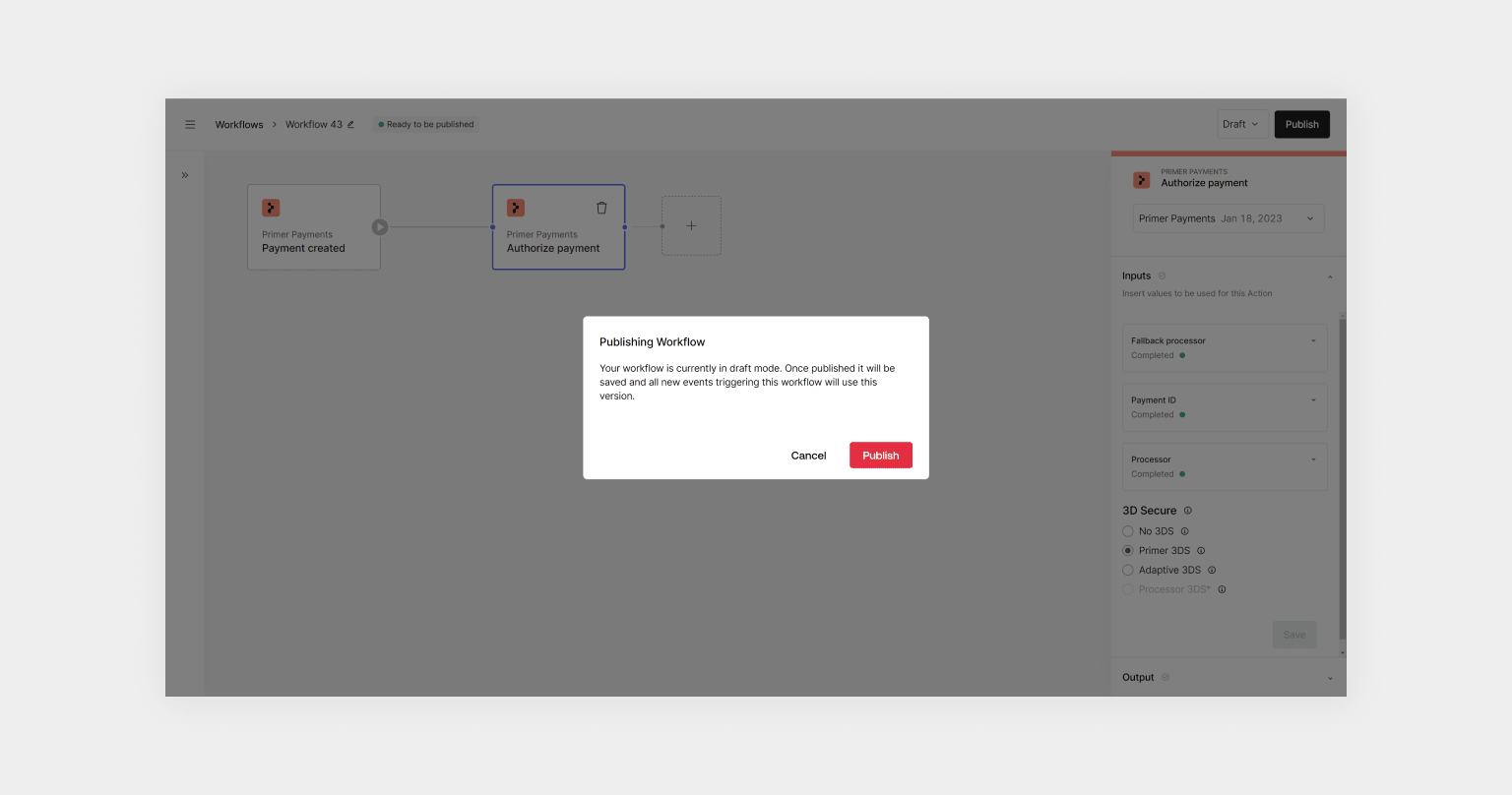
Publish workflow
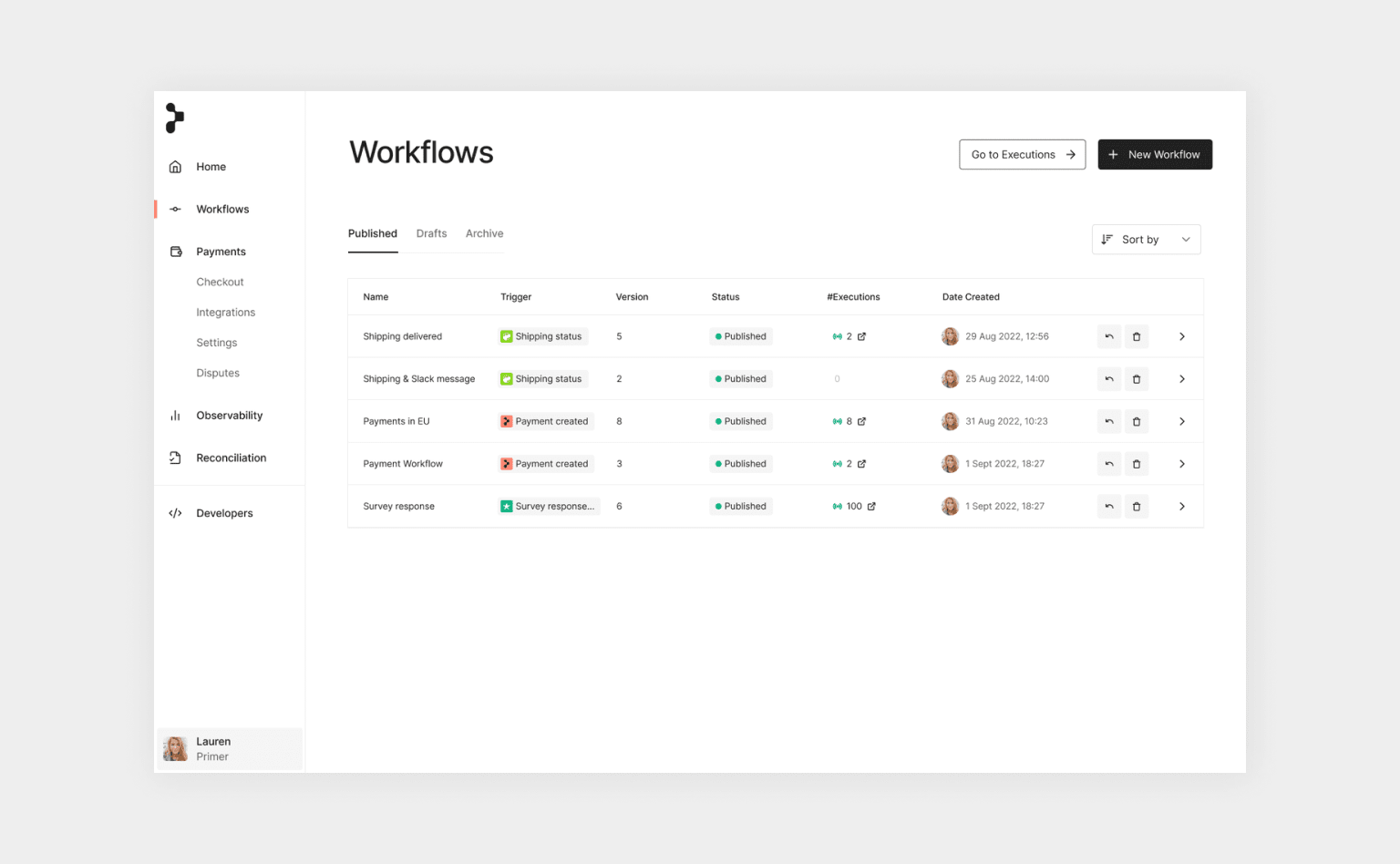
Workflows overview
Use Utilities
The workflow we just created is very simple as it runs linearly from left to right. Utilities help you create more complex workflows, like using the Conditions or Split Utility to branch a workflow into multiple routes. Conditions exist on two levels: either on the Trigger itself (“Trigger Conditions”) or as a Utility within your workflow route.Workflow Conditions
Conditions within the workflow allow you to create multiple routes. For example to run a different set of actions depending on the country of the payment: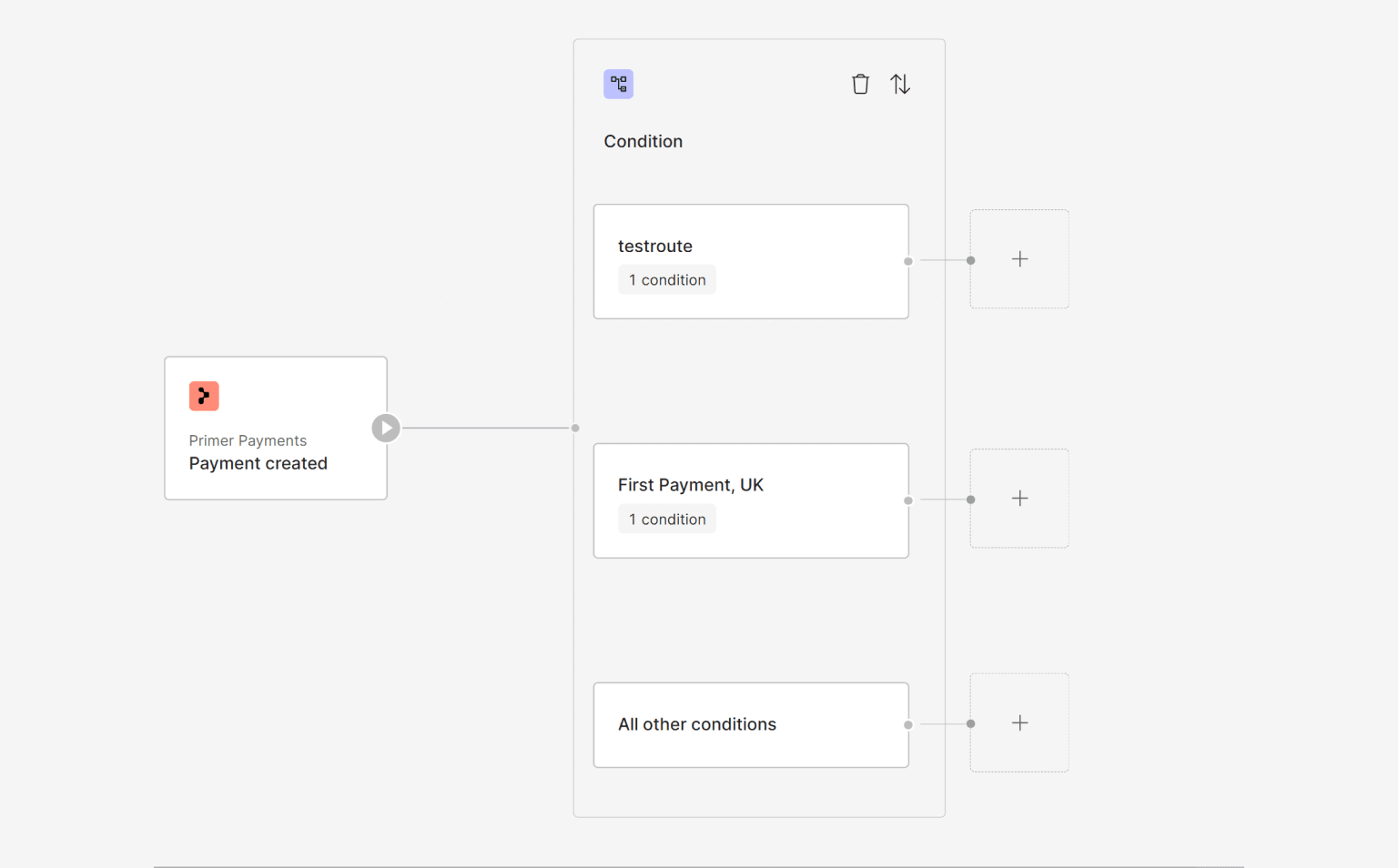
Multi conditions
Trigger Conditions
Trigger Conditions enable you to set conditions for when to actually start a workflow. For example executing a “Payment created” Trigger only for Ecommerce payments, or split payment workflows by payment method, or have different workflows depending on specific shipping updates.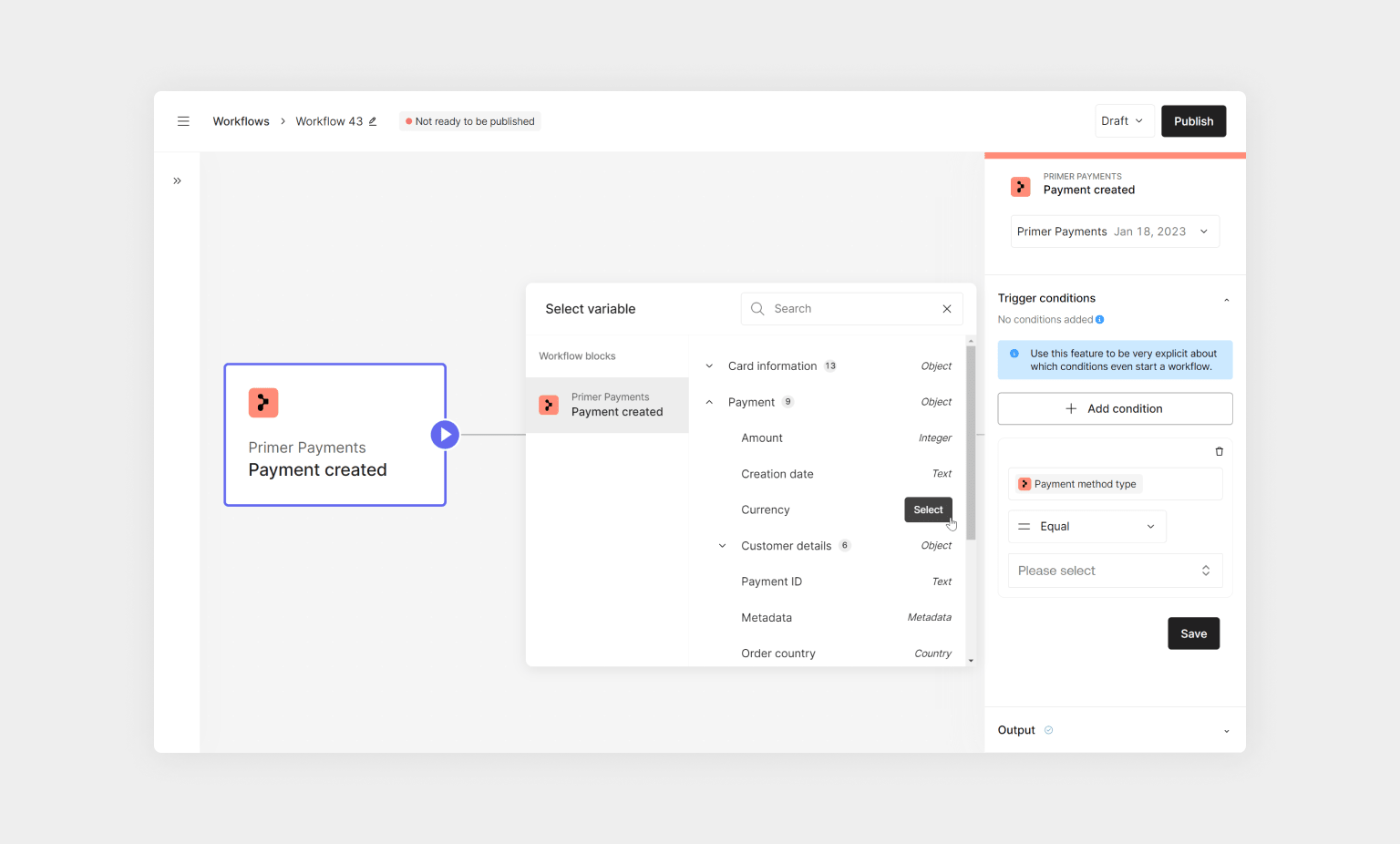
Trigger Condition
Start automating
You are now able to supercharge your payment stack with the power of Workflows. To build more powerful workflows, we encourage you to:- Learn about the Payments App
- Check our guide to monitor workflows
- Learn more about Workflows best practices